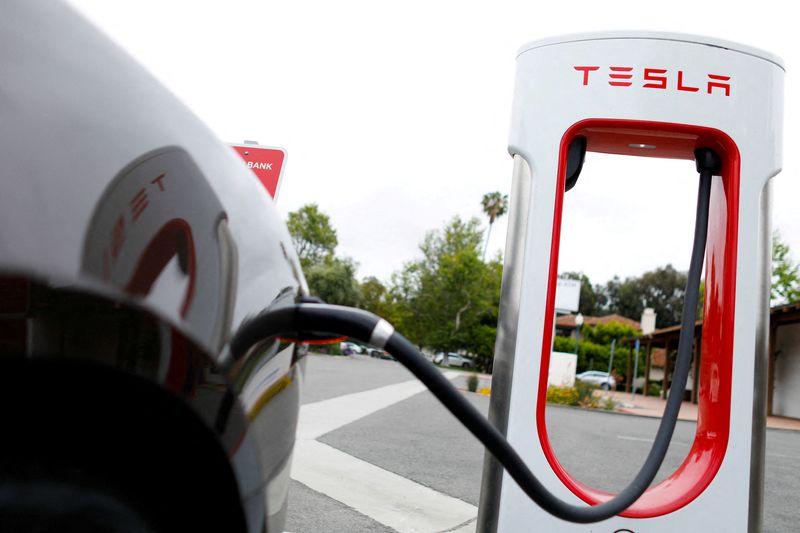Raymond James resumes coverage on Uber, DoorDash, Lyft; Initiates Instacart

Investing.com — Raymond James has recently resumed coverage on Uber Technologies Inc . (NYSE:UBER), DoorDash Inc. (NASDAQ:DASH), and Lyft Inc. (NASDAQ:LYFT), while initiating coverage on Instacart (NASDAQ:CART).
Raymond James has resumed coverage of Uber with a “strong buy” rating, underpinned by the “Robo-Ride” thesis.
This thesis positions Uber as a key player in the evolving landscape of autonomous transportation, with its partnership with Waymo expected to be a driver of future growth.
Uber’s scale, particularly its extensive customer base of over 150 million monthly active platform consumers, is viewed as a critical asset in enhancing the utilization of autonomous vehicles, particularly robotaxis.
Uber’s revenue is projected to grow steadily, reaching $43.42 billion in 2024 and $50.94 billion in 2025, reflecting a year-over-year (YoY) growth rate of 16.5% and 17.3%, respectively.
Adjusted EBITDA is expected to rise from $6.45 billion in 2024 to $8.86 billion in 2025, demonstrating the company’s growing profitability.
The expansion of Uber’s autonomous fleet, driven by its partnership with Waymo, is anticipated to result in a 1% to 2% revenue uplift as autonomous rideshare vehicles improve network efficiency and utilization rates.
This potential boost in revenue could position Uber to lead the next wave of technological transformation in transportation.
The key to Uber’s long-term success will lie in its ability to capitalize on its AV partnerships while maintaining strong performance in its core businesses such as Uber Eats and Uber Freight.
Raymond James is confident that Uber’s non-UberX adoption rates will continue to rise, particularly in non-core services like Uber One and Eats.
Additionally, Uber’s foray into the advertising space, with advertising currently contributing less than 1.5% of its delivery bookings, has significant room for growth as the company explores further monetization avenues.
DoorDash has been rated “outperform” due to its strong unit economics and the scalability of its core restaurant delivery business. The company’s focus on driving operational efficiency and expanding into new verticals, such as grocery delivery and DashPass, underpins Raymond James’ optimistic outlook.
DoorDash’s financials show growth potential, with projected revenue reaching $10.59 billion in 2024 and growing to $12.46 billion in 2025, a YoY growth of 22.7% and 17.6%, respectively.
Gross Order Value (GOV) is expected to increase from $79.54 billion in 2024 to $91.83 billion by 2025.
Additionally, DoorDash’s Adjusted EBITDA is projected to rise from $1.87 billion in 2024 to $2.71 billion in 2025, supported by margin expansion driven by the scaling of its U.S. restaurant segment and international ventures.
A critical element of DoorDash’s growth strategy is its multi-modal delivery network, including the integration of robots and drones, which will enhance its delivery efficiency for short distances and smaller packages.
However, while these technologies hold promise, regulatory constraints related to airspace and low robot speeds may slow their near-term impact on operational efficiency.
Nonetheless, Raymond James expects DoorDash to leverage its scale and selection to continue improving its margins and expanding its market share.
The brokerage has resumed coverage of Lyft with a “market perform” rating. While the company has made progress in optimizing rider and driver experiences, it faces substantial risks in the increasingly competitive robotaxi market. Unlike Uber, which has established a strong partnership with Waymo, Lyft lacks the same level of scale in its autonomous partnerships, which may limit its ability to capitalize on the shift toward robotaxis.
Lyft’s revenue is projected to grow to $6.36 billion in 2025, with a YoY increase of 13%, while Adjusted EBITDA is expected to rise to $458 million.
However, the company’s profitability is constrained by heavy rider investments and limited visibility into its autonomous operations. Lyft’s focus on reducing “Prime Time” pricing and introducing initiatives like “Price Lock” has resulted in some pressure on bookings, but Raymond James expects rising ride frequency to partially offset these challenges over time.
Instacart, which has seen growth in its grocery delivery services, is initiated with a “market perform” rating.
While the company has successfully built a strong enterprise business with deep relationships across 1,500 grocery banners, there is limited visibility into its future EBITDA upside due to mixed demand trends in the consumer-packaged goods (CPG) advertising sector.
Instacart’s revenue is projected to grow modestly, reaching $3.38 billion in 2024 and $3.63 billion in 2025. The company’s Gross Transaction Value (GTV) is expected to increase slightly from $33.33 billion to $35.71 billion over the same period.
While Instacart has the potential to expand its advertising reach, particularly in off-platform initiatives, concerns around CPG ad demand volatility pose a significant challenge.
Despite these concerns, Raymond James acknowledges Instacart’s strong positioning within the grocery logistics space. With a market share of over 70% in grocery baskets above $75 and a high level of order accuracy due to its tenured shoppers, Instacart is well-positioned to maintain its dominance in large-basket grocery deliveries.
However, the company’s future growth will depend heavily on its ability to drive higher advertising revenue and deepen its enterprise relationships.
Raymond James’ valuation analysis shows that Uber and DoorDash are trading at relatively attractive multiples. Uber is trading at 14.7x its 2026 EV/EBITDA, while DoorDash trades at 25x.
In contrast, Instacart’s valuation reflects more conservative expectations due to uncertainties surrounding its advertising business and its ability to scale enterprise relationships.
Lyft is also seen as a more conservative investment, trading at a lower multiple due to the challenges it faces in transitioning to autonomous operations





